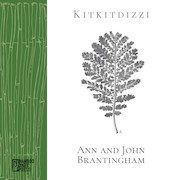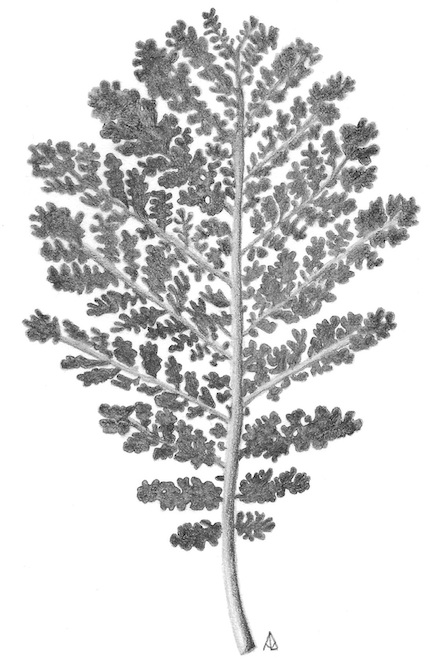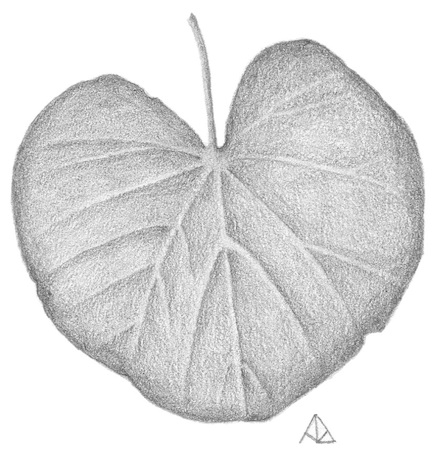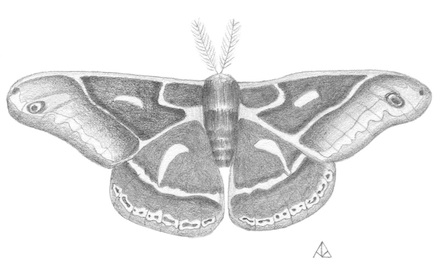
|
|
|
|
|
| Issue 16: | 1 Jan. 2023 |
| Book Review: | 1,208 words |
By Kendall Johnson
A Walk Among Giants
 |
Kitkitdizzi: A Non-Linear Memoir of the High Sierra by Ann and John Brantingham Bamboo Dart Press December 2022 78 pages |
John and his wife Ann Brantingham wake long before light. They step out of their converted van with the sleeping mattress, the one concession they make for comfort, and pull the sliding door closed quietly. It is still dark at Wolverton Campground as they pick up trekking poles, notebooks, drawing paper, and silently disappear into the moon’s shadows. By the time the sun begins to lighten the far peaks, and spill into one of the several meadows of Sequoia Kings Canyon National Park, both watch the birds, deer, and bear begin their day. John will be composing a new poem, Ann a new drawing.
She draws Kitkitdizzi:

He writes:
It is such a relief to stop being me for a while. In those moments, I re-see the world for what it is or at least what it is for me. In a meadow, I do nothing but watch the grass stalks bending back and forth in the breeze. In the forest where the fir trees gather together to create deep shadows, I grope from one trunk to the next heading straight toward the place where the trees open up, and there is a splash of moonlight on the ground.
In a couple hours they will be back, helping the campers around them prepare breakfasts and get to the US Park Service cabin nearby. In their service capacity, John is the Inaugural Poet Laureate of the Park, and Ann the Artist in Residence. Artist and Professors in Southern California, they have spent the past eight summers here, introducing newcomers to the mountain. Some are artists and writers, some are students from John’s college. All are here, to learn to see the forest.
In December, Bamboo Dart Press issued a culmination of the Brantinghams’ work. A collaborative hybrid memoir, Kitkitdizzi juxtaposes Ann’s fine graphite drawings with John’s reflective flash essays. As their foreword explains, this project reports in words and images their work in the National Park [NP]. Ann’s images do not illustrate John’s flash memoir essays, but rather look in the same direction. This book is important on two counts. First, their work, as we have grown to expect, is extraordinary. Both the artwork and writing sing a powerful and evocative duet. Secondly, this book offers us a retreat from the madness in which most of us live.
She draws the Western Redbud:

He writes:
I’ve never had a moment like this before, running through a lightning and hail storm, the thunder like something out of a Wagnerian opera. I’m going down the ridgeline which is perhaps only twenty yards wide, so when a black bear sees me charging, he assumes there is something to run from and starts his own gallop downhill, running in a kind of easy lope. For a moment, maybe five seconds, we’re running together, me on the trail, him through the trees, but together.
Both writing and artwork are intelligent, reflective, meditative, and nurturing. It takes more than eyes to see, a fact that they lean into with all of their students, whatever their ages. Hearts must be engaged to see the forest, as must the skin and soul, memories and dreams—whether this is the newcomer’s first time out of the city, or the hundredth time. On my first visit, I’d been in most forests in the west, grown up in a family cabin on Big Bear Lake, served three years as a wildland firefighter, and then as a trauma shrink; and I had spent an additional thirty years intervening with wildland fire crews, and their supervisors after any number of fires, plane crashes, killings, suicides, mudslides, wind shears, and earthquakes. I thought I knew the forest. Yet on that visit with John and Ann, I realized that I had just begun to learn to see.
In his mountain workshops, John teaches how to write to nature, how to listen to the patterns below the sounds, how to walk through the forest as if you were newborn. Ann teaches how to be in the forest, with pencil or charcoal, deeply. She draws like St. Anthony might, or Mother Teresa, by sitting still and looking, really looking, at the things before her however small. She teaches drawing as a meditative act, showing us how to follow Blake in seeing the “world in a grain of sand, infinity in the palm” of her hand.
As a former trauma shrink, I’ve followed their retreats into the forest with great interest, understanding that both of them find natural healing in the quiet and peace. Indeed, we all need this, especially now. Our world seems to be awobble on its axis, as truth is assailed to be mere opinion, veracity a product of volume, uncertainty a new norm. Writers, teachers, creatives, and those working with the less fortunate seem especially vulnerable to circumstance that troubles their heart. John and Ann speak directly to the distressed souls that find their way to the mountain. There we are shown the way to access the sunlight and breezes and wellsprings that are always and forever available within.
She draws Ceanothus Moth:

He writes:
I come up to the overlook where I can see the meadow, and I watch it turn silver in the night. The cool wind is on my face, and it riffles the grasses. I have forgotten now that I will be in the city tomorrow. I have forgotten my students, my place in this world, my wife, and even myself. I have left behind my worry about the campfire. Right now is all that matters.
John and Ann have now left the Sequoia NP, and moved back to New York. Southern California and the teaching which he loved had become sacrificial and was taking its toll on their sense of well being. Working summers in the forest had helped them deal with urban stressors and political conflict, and had helped them last an additional ten years. But now they have found a more sustaining environment and have made the shift to the small towns and woodlands of the east coast. It’s been a good move: John’s writing is maturing, he produces a literary journal of note, The Journal of Radical Wonder, and Ann’s art is taking off. But with Kitkitdizzi, they leave us with a gift and a direction.
I met them five years ago in my gallery in Pomona, I sitting my exhibit, John and Ann leading a reading of poetry in which I was persuaded to participate. I knew Ann to be an artist, and John a college professor. Both accepted me warmly, and after the reading, explained two things. John showed me his business card as an editor for the literary journal Chiron Review. Ann then sealed the deal, explaining her National Park Service parka. Yes, she worked at Sequoia, but there was more. This was a time when conservative forces were doing their best to dismantle the NPS and to open protected lands for exploitation. Ann explained that her parka was actually a uniform of political resistance.
Kitkitdizzi is an eloquent extension of this team’s quietly thunderous work.
Publisher’s Note:
Here in Issue 16, see also the companion piece by Kendall Johnson, “A Conversation with John and Ann Brantingham,” in which the couple discusses, among other things, how they find personal balance and how they best care for themselves and each other.
Ann Brantingham
is a nature artist focusing on local plants and other natural subjects. She teaches art at Sequoia and Kings Canyon National Parks. Her work, featured at the dA Center for the Arts, The Sasse Museum, and the Progress Gallery, explores leaves and other natural elements in graphite on a small scale in order to experience the physicality of a branch or single leaf. Her hope is that through experiencing the environment around them, people will see that we have more similarities than differences and that through nature, we can find our peace.
Visit her Society6 shop at: https://society6.com/annbrantingham
John Brantingham
was the first poet laureate of Sequoia and Kings Canyon National Parks, and now lives in Jamestown, New York. He is the author of 19 books of poetry and fiction including his latest, Life: Orange to Pear (Bamboo Dart Press, 2020). His poems, stories, and essays are published in hundreds of magazines and journals. His work has appeared on Garrison Keillor’s daily show, The Writer’s Almanac; has been nominated multiple times for the Pushcart Prize; and was selected for publication in The Best Small Fictions anthology series for 2022 and 2016.
Author’s website: johnbrantingham.com
More on the Web: By, About, and Beyond
⚡ Brantingham on Brantingham: The Art of Ann Brantingham by John Brantingham in Cultural Daily (2 December 2020)
⚡ Finnegan’s (Fiancée Goes McArthur Park on His Birthday) Cake, flash fiction by Brantingham in MacQueen’s Quinterly (Issue 9, August 2021); selected for publication in The Best Small Fictions 2022 anthology
⚡ Objects of Curiosity, a collection of his ekphrastic poems (Sasse Museum of Art, 2020)
⚡ For the Deer, one of two haibun by Brantingham in KYSO Flash (Issue 8, August 2017)
Kendall Johnson
grew up in the lemon groves in Southern California, raised by assorted coyotes and bobcats. A former firefighter with military experience, he served as traumatic stress therapist and crisis consultant—often in the field. A nationally certified teacher, he taught art and writing, served as a gallery director, and still serves on the board of the Sasse Museum of Art, for whom he authored the museum books Fragments: An Archeology of Memory (2017), an attempt to use art and writing to retrieve lost memories of combat, and Dear Vincent: A Psychologist Turned Artist Writes Back to Van Gogh (2020). He holds national board certification as an art teacher for adolescent to young adults.
Recently, Dr. Johnson retired from teaching and clinical work to pursue painting, photography, and writing full time. In that capacity he has written five literary books of artwork and poetry, and one in art history. His shorter work has appeared in Literary Hub, Chiron Review, Shark Reef, Cultural Weekly, and Quarks Ediciones Digitales, and was translated into Chinese by Poetry Hall: A Chinese and English Bi-Lingual Journal. His memoir collection, Chaos & Ash, was released from Pelekinesis in 2020, his Black Box Poetics from Bamboo Dart Press in 2021, The Stardust Mirage from Cholla Needles Press in 2022, and his Fireflies Against Darkness and More Fireflies series from Arroyo Seco Press in 2021 and 2022. He serves as contributing editor for the Journal of Radical Wonder.
Author’s website: www.layeredmeaning.com
More on the Web: By, About, and Beyond
⚡ Kendall Johnson’s Black Box Poetics is out today on Bamboo Dart Press, an interview by Dennis Callaci in Shrimper Records blog (10 June 2021)
⚡ Self Portraits: A Review of Kendall Johnson’s Dear Vincent, by Trevor Losh-Johnson in The Ekphrastic Review (6 March 2020)
⚡ On the Ground Fighting a New American Wildfire by Kendall Johnson at Literary Hub (12 August 2020), a selection from his book Chaos & Ash (Pelekinesis, 2020)
⚡ A review of Chaos & Ash by John Brantingham in Tears in the Fence (2 January 2021)
| Copyright © 2019-2025 by MacQueen’s Quinterly and by those whose works appear here. | |
| Logo and website designed and built by Clare MacQueen; copyrighted © 2019-2025. | |
|
Data collection, storage, assimilation, or interpretation of this publication, in whole or in part, for the purpose of AI training are expressly forbidden, no exceptions. |
At MacQ, we take your privacy seriously. We do not collect, sell, rent, or exchange your name and email address, or any other information about you, to third parties for marketing purposes. When you contact us, we will use your name and email address only in order to respond to your questions, comments, etc.